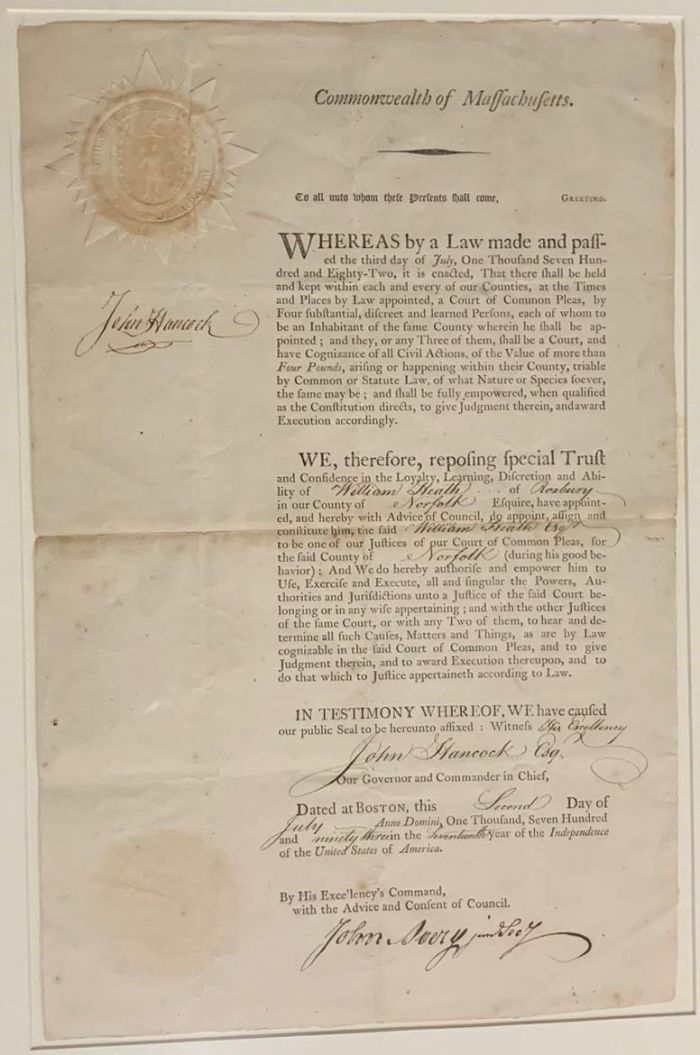 On eBay Now...
On eBay Now...John Hancock Signed Appointment for William Heath of Roxbury, Norfolk County of For Sale

When you click on links to various merchants on this site and make a purchase, this can result in this site earning a commission. Affiliate programs and affiliations include, but are not limited to, the eBay Partner Network.
John Hancock Signed Appointment for William Heath of Roxbury, Norfolk County of :
$9625.00
John Hancock and John Avery signed appointment for William Heath of Roxbury, Norfolk County of Massachusetts. John Hancock (January 23, 1737 [O.S. January 12, 1736] \" October 8, 1793) was an American merchant, statesman, and prominent Patriot of the American Revolution. He served as president of the Second Continental Congress and was the first and third Governor of the Commonwealth of Massachusetts. He is remembered for his large and stylish signature on the United States Declaration of Independence, so much so that the term \"John Hancock\" has become a synonym in the United States for one\'s signature. Before the American Revolution, Hancock was one of the wealthiest men in the Thirteen Colonies, having inherited a profitable mercantile business from his uncle. He began his political career in Boston as a protg of Samuel Adams, an influential local politician, though the two men later became estranged. Hancock used his wealth to support the colonial cause as tensions increased between colonists and Great Britain in the 1760s. He became very popular in Massachusetts, especially after British officials seized his sloop Liberty in 1768 and charged him with smuggling. Those charges were eventually dropped; he has often been described as a smuggler in historical accounts, but the accuracy of this characterization has been questioned. Hancock was one of Boston\'s leaders during the crisis that led to the outbreak of the Item ordered may not be exact piece shown. All original and authentic.

